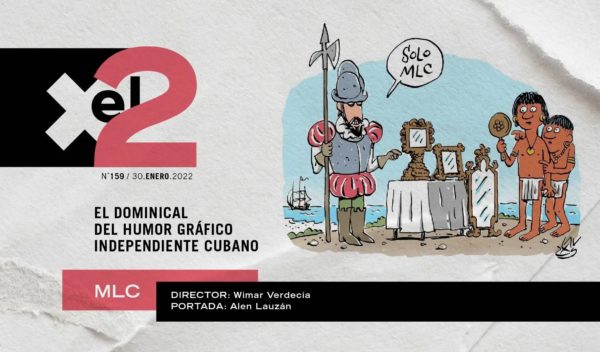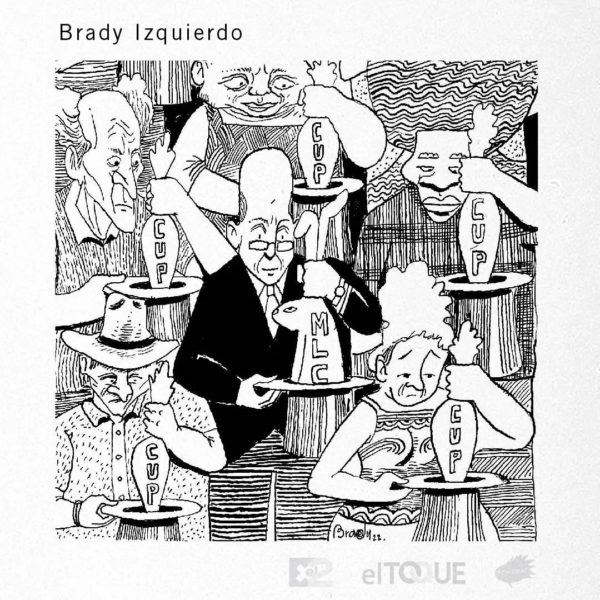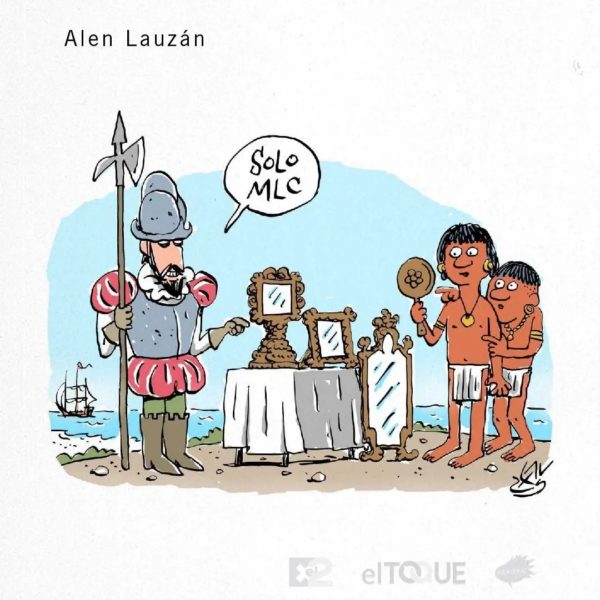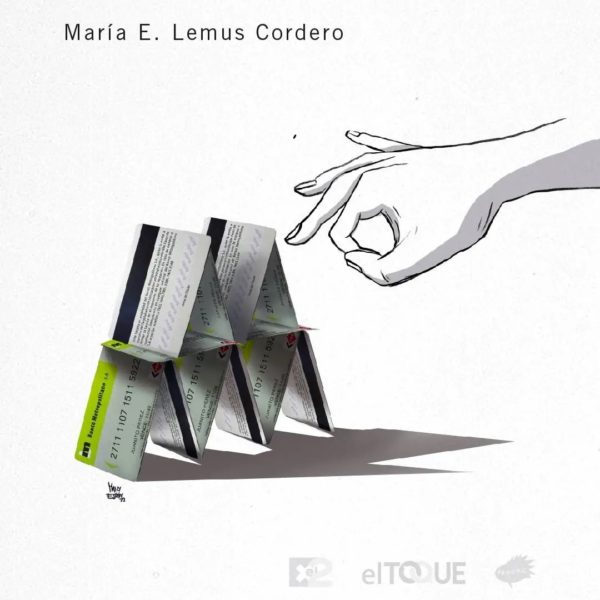Reality in “MLC” (Cuba’s Magnetic Currency)

By Xel2 (El Toque)
HAVANA TIMES – This week we have drawn on the freely convertible currency (MLC), the Cuban digital currency that substitutes the disappeared CUC. It is a currency whose exchange rate has not stopped growing in the informal market and in which most of the essential products are now offered in a network of stores throughout the country with the prices in USD.
Its about a phenomenon that represents a loss for the average citizen and a profit for those who invented it. According to the official discourse, initially only “high-end products” would be sold in the MLC with the intention of “reinserting that currency into the national industry” and “importing children’s milk.” Now there is almost no milk for children, Cuban industry is virtually non-existent and a product of any quality can appear in those stores.
The appearance of the MLC was a turning point that enhanced the differences between those who can obtain this currency through payments and remittances from abroad and those who can only do so on the illicit market with their devalued peso salaries and pensions.
These days the MLC has been overtaken by the US dollar, an unprecedented trend since the circulation of the new Cuban magnetic currency, when obtaining it became the daily reality of Cubans to an extreme level. This does not appear in the news, like the reality shown in the government media; instead it throbs in the streets, in the lines and in the half-empty markets.
Greetings and happy Sunday,
Wimar Verdecia Fuentes













I had the fortunate, or perhaps the misfortune, depends on how one views the situation to enter a Cuban MLC store and it was not a pleasant experience.
A major hardship will await any Cuban with the privilege of having to shop in a plastic card retail concept even before stepping into the establishment. One cannot simply wonder into an MLC retail concept as one would in say Canada, United States or Europe. No. Obstacles are obstructive.
In the outlet I eventually entered with a Cuban colleague, the Cuban shopper, before entering, had to provide the Cuban identity card to a store employee who comes out every once in awhile to allow potential customers in then returns the identity card to the “lucky” shopper who then proceeds into the store.
Potential customers must wait in the unbearable heat for hours depending on how fortitudinous the shopper is in arriving very early to be in front of the store doors on opening. Because there is no retail competition in Cuba, customers put up with this aggravation otherwise they do without which is not an option.
Upon entering what does one see on the shelves. Definitely rows upon rows of huge tin cans of guava marmalade stretching the length of the store. Where did these multitude of marmalade tins come from? Obviously they were produced domestically for the domestic market. But, the domestic market, that is, the ordinary Cuban with the privilege of MLC shopping does not buy guava marmalade at whatever the inflated cost because guava, a natural fruit grown through out Cuba, can be purchased in its natural state for a few pesos at the local market. Or, almost every second tree in Cuba produces guava fruit in fruitful abundance: why buy sweetened mashed guava?
Of course the communist government since it has shelve space to fill in these government operated MLC operations fills them not with what customers need, desire and willing to purchase but with what the government dictates. Then it proclaims to its citizens with journalistic fervor on the nightly news how productive the production of marmalade is in Cuba and how proud the country should be in its marmalade marvels! But no Cuban buys the stuff. Obviously not an astute retail business practice.
And to continue with food products on shelves, row upon row, but not in customers shopping carts are stacked canned peas and carrots, canned peaches, and other canned fruit and vegetables not native to Cuba. How about jars of asparagus? Freezers full of berries (strawberries and raspberries) in plastic bags to which most Cubans never eat let alone spend hard earned money or money sent to them to purchase such delicacy.
Most native Cubans, at least the ones I know have never seen a wild fresh strawberry nor a wild fresh raspberry because such delicate fruit are not native to the island and must be imported resulting in prohibitive price to purchase. Frozen berries do not sell in Cuba at least that is what the untouched frozen freezers seemed to say. Cuban customers gawk and gesture to one another what exactly is in the plastic bags before moving to the frozen chicken breasts and cheese. Those staples sell but they’re always in short supply.
There is definitely a huge disconnect between the Cuban communist government’s MLC stores and the Cuban consumer. The communist government runs these inefficient operations obviously for the sole purpose of making money with absolute no interest or concern for the Cuban consumer who must spend money purchasing what is not consumer dictated as most successful retail operations operate.
I wonder those who justified in this pages with their comments feel about the people in Cuba getting pay in a currency and force to purchase basics necessities in another currency it’s totally Buñuel meet Kafka in the Socialism of the XKI Century